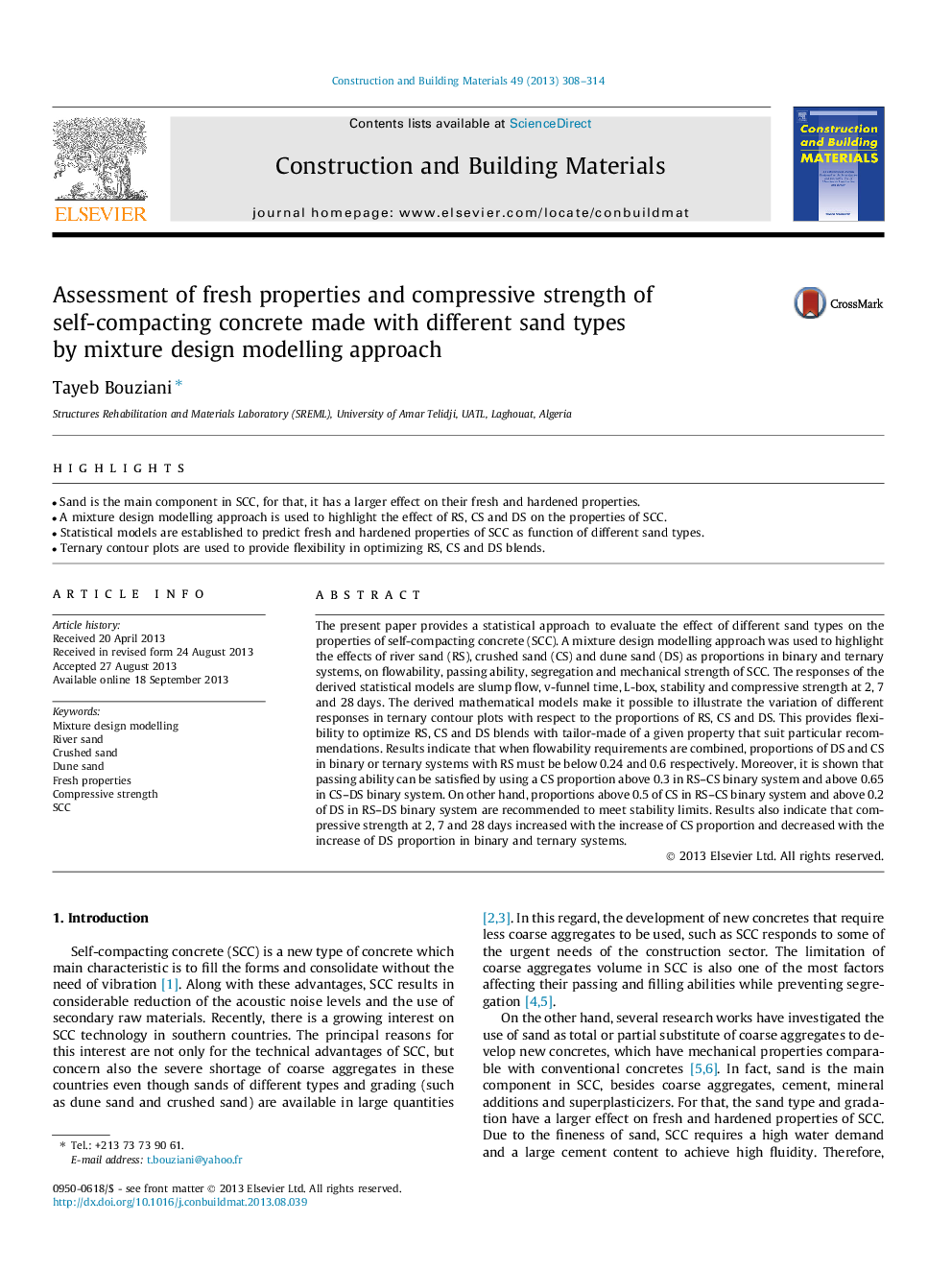| Article ID | Journal | Published Year | Pages | File Type |
|---|---|---|---|---|
| 6724799 | Construction and Building Materials | 2013 | 7 Pages |
Abstract
The present paper provides a statistical approach to evaluate the effect of different sand types on the properties of self-compacting concrete (SCC). A mixture design modelling approach was used to highlight the effects of river sand (RS), crushed sand (CS) and dune sand (DS) as proportions in binary and ternary systems, on flowability, passing ability, segregation and mechanical strength of SCC. The responses of the derived statistical models are slump flow, v-funnel time, L-box, stability and compressive strength at 2, 7 and 28Â days. The derived mathematical models make it possible to illustrate the variation of different responses in ternary contour plots with respect to the proportions of RS, CS and DS. This provides flexibility to optimize RS, CS and DS blends with tailor-made of a given property that suit particular recommendations. Results indicate that when flowability requirements are combined, proportions of DS and CS in binary or ternary systems with RS must be below 0.24 and 0.6 respectively. Moreover, it is shown that passing ability can be satisfied by using a CS proportion above 0.3 in RS-CS binary system and above 0.65 in CS-DS binary system. On other hand, proportions above 0.5 of CS in RS-CS binary system and above 0.2 of DS in RS-DS binary system are recommended to meet stability limits. Results also indicate that compressive strength at 2, 7 and 28Â days increased with the increase of CS proportion and decreased with the increase of DS proportion in binary and ternary systems.
Related Topics
Physical Sciences and Engineering
Engineering
Civil and Structural Engineering
Authors
Tayeb Bouziani,
